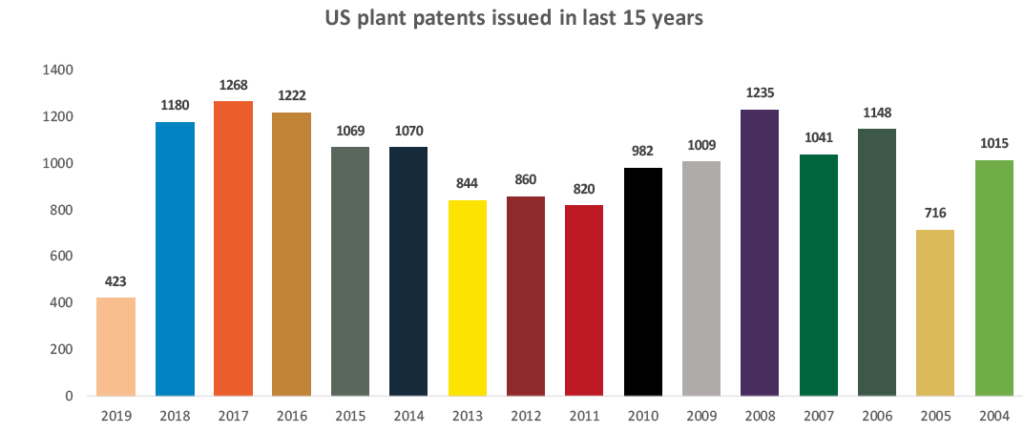Plant Patents
Evolution: The United States started granting patents for the plant varieties for the first time in 1930. The first patent was issued to Henry Bosenberg for climbing, ever-blooming rose in the year 1931.
35 U.S.C. 161 – Patents for plants.
According to the plant patent act 1930 under 35 U.S.C. 161, plant patent is the right given to an inventor for an asexually reproduced plant varieties, including cultivated sports, mutants, hybrids, and newly found seedlings other than a tuber propagated plant. An asexually reproduced plant resembles the plants which are discovered, breeded, grafted or newly created ones. Moreover, the plants in uncultivated or wild condition are not patented. A plant patent can be operated for a period of 20years from the date of filing an application.
Note: Sexually produced plant species cannot be protected by patent law but can be protected by a federal law passed in 1970, known as plant variety protection Act.
35 U.S.C. 162 – Description, claim.
- No plant patent will be proclaimed invalid for rebelliousness with section 112 if the depiction is as complete as is sensibly conceivable. The claim in the specification will be in formal terms to the plant shown and depicted.
35 U.S.C. 163 – Grant.
On account of a plant patent, the grant shall include the right to exclude others from asexually reproducing the plant, and from using, offering for sale, or selling the plant so reproduced, or any of its parts, throughout the United States, or from importing the plant so reproduced, or any parts thereof, into the United States.
35 U.S.C. 164 – Assistance of the Department of Agriculture.
The President may by Executive order direct the Secretary of Agriculture, in accordance with the requests of the Director, for the purpose of carrying into effect the provisions of this title with respect to plants (1) to
furnish available information of the Department of Agriculture, (2) to conduct through the appropriate bureau or division of the Department research upon special problems, or (3) to detail to the Director officers and employees of the Department.
37 CFR 1.165 – Plant drawings.
(a) Plant patent illustrations ought to be imaginatively and ably executed and must comply with the requirements of § 1.84. View numbers and reference characters need not be utilized except if required by the examiner. The drawing must disclose all the uncommon characteristics of the plant competent of visual representation.
(b) The drawings might in colour. The drawing must be in colour if colour is a distinguishing characteristic of the new variety. Two copies of colour drawings or photographs and a black and white photocopy that accurately depicts, to the extent possible, the subject matter shown in the colour drawing or photograph must be submitted.
General conditions to be followed for obtaining a plant patent:
- Plants discovered or found during the growing process and not reproduced sexually.
- Plants are not legally excluded, unless it means that some plants used for breeding are not part of tubers, such as potatoes or Jerusalem artichoke.
- The inventor who filed the patent application must be the person who discovered the claimed plant.
- The plant should not be used, not disclosed, not published publicly until the filing date of patent application with some exceptions and not described in US patents or issued patent applications.
- The plant claimed in the patent/application must differ from the familiar plants and it should have more than one characteristic, such as difference in growth conditions or fertility levels.
- The invented plant should not be obvious to a person having ordinary skilled in the art.
- A plant patent can have two named inventors: one who found the plant and one who asexually reproduce it. If the invention is team effort, everyone from the group can be named as a co-inventor
- While applying for a plant patent, an inventor might also need to apply for a utility patent or a design patent to fully protect the plant. For example, if the new plant variety has a unique appearance, the inventor would want both a plant patent and a design patent.
Plant Patents issued in the last 15 years
References:
https://www.ipmall.info/content/plant-patent-directory-legislation-and-articles-interest
https://www.investopedia.com/terms/p/plant-patent.asp
https://www.upcounsel.com/plant-patent
